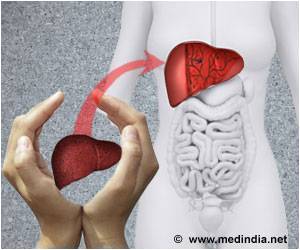Preoperative cardiopulmonary exercise testing (CPET) helps predict survival following liver transplantation, a recent study has revealed.

CPET is a non-invasive measure of cardiorespiratory fitness and has been previously used as a predictor of morbidity and mortality following other types of major surgeries. "Liver transplantation carries a significant mortality risk in the early days following surgery," explains Dr. James Prentis from Freeman Hospital in Newcastle upon Tyne in the U.K. "An accurate preoperative assessment like CPET could help minimize patient mortality and optimize limited donor organs."
For the current study, researchers included CPET as part of the preoperative assessment in 182 patients undergoing liver transplantation at Freeman Hospital over a 3-year period. Of those in the study, 91% (165) successfully completed the CPET which the team defined as the ability to determine the anaerobic threshold. Following transplantation patients received follow-up to determine 90-day mortality, critical care and length of hospital stay.
Findings report that 60 patients (33%) received a liver transplant and of those 6 (10%) died following transplantation. The mean anaerobic threshold was significantly higher in survivors compared to non-survivors, with multivariate analysis showing cardiopulmonary reserve to be a significant predictor of mortality. Dr. Prentis concludes, "CPET is a non-invasive, sensitive and specific predictor of survival following liver transplantation. However, further evaluation of its predictive value in larger cohorts is necessary."
In a related editorial also published in Liver Transplantation, Dr. James Findlay from the Mayo Clinic in Rochester, Minnesota writes, "While CPET is widely available there are similar preoperative assessments such as the six-minute walking test that could also be used. Liver transplantation specialists have a duty to provide candidates with an accurate risk-benefit assessment and ensure that scarce donor organs are used effectively. The findings of Prentis and colleagues are striking enough to merit further evaluation." Dr. Findlay suggests large, multi-center investigations of CPET that include additional mortality indicators are necessary to develop an outcome model that could be widely used in evaluating candidates for liver transplantation.
 MEDINDIA
MEDINDIA




 Email
Email










